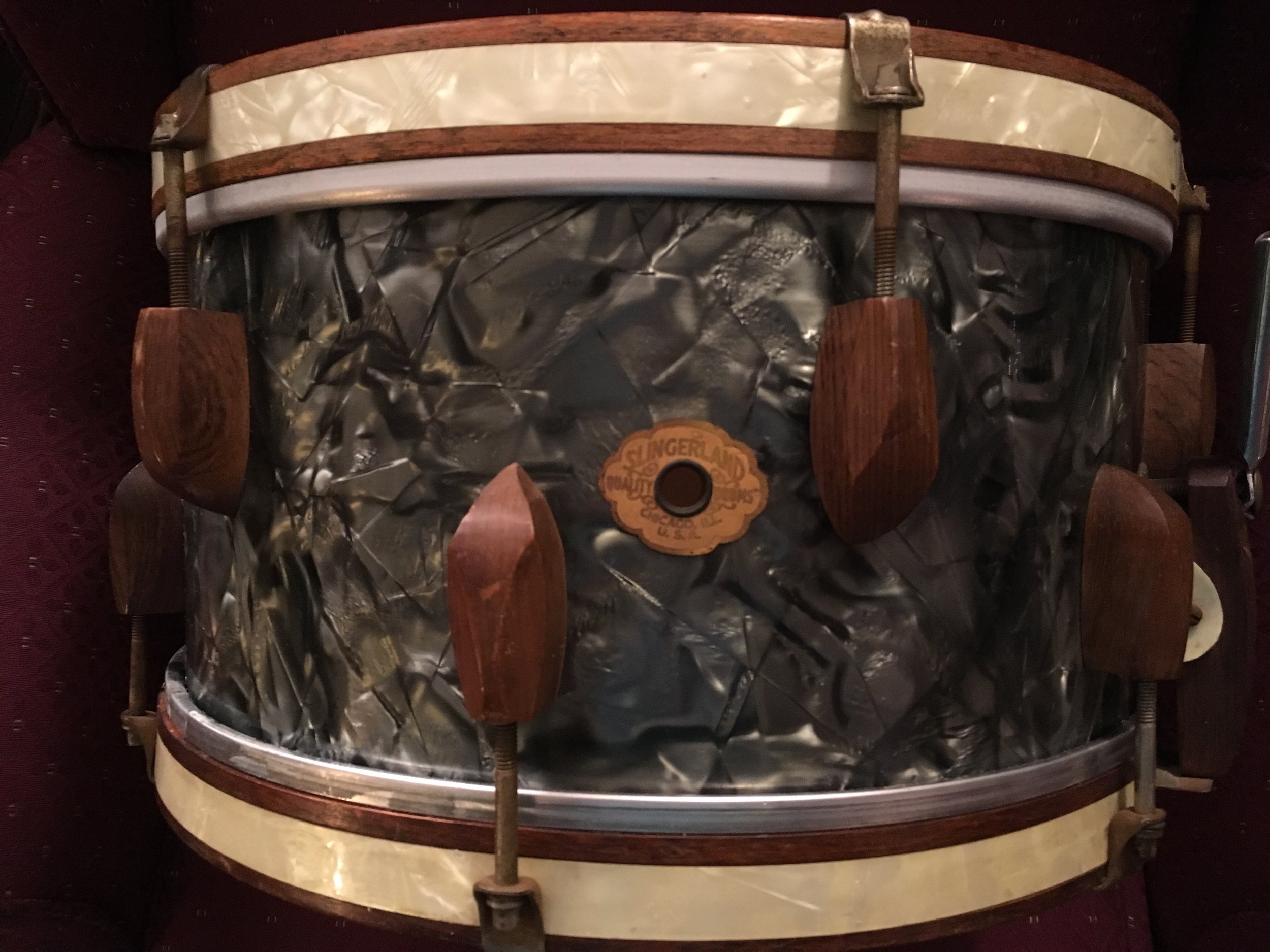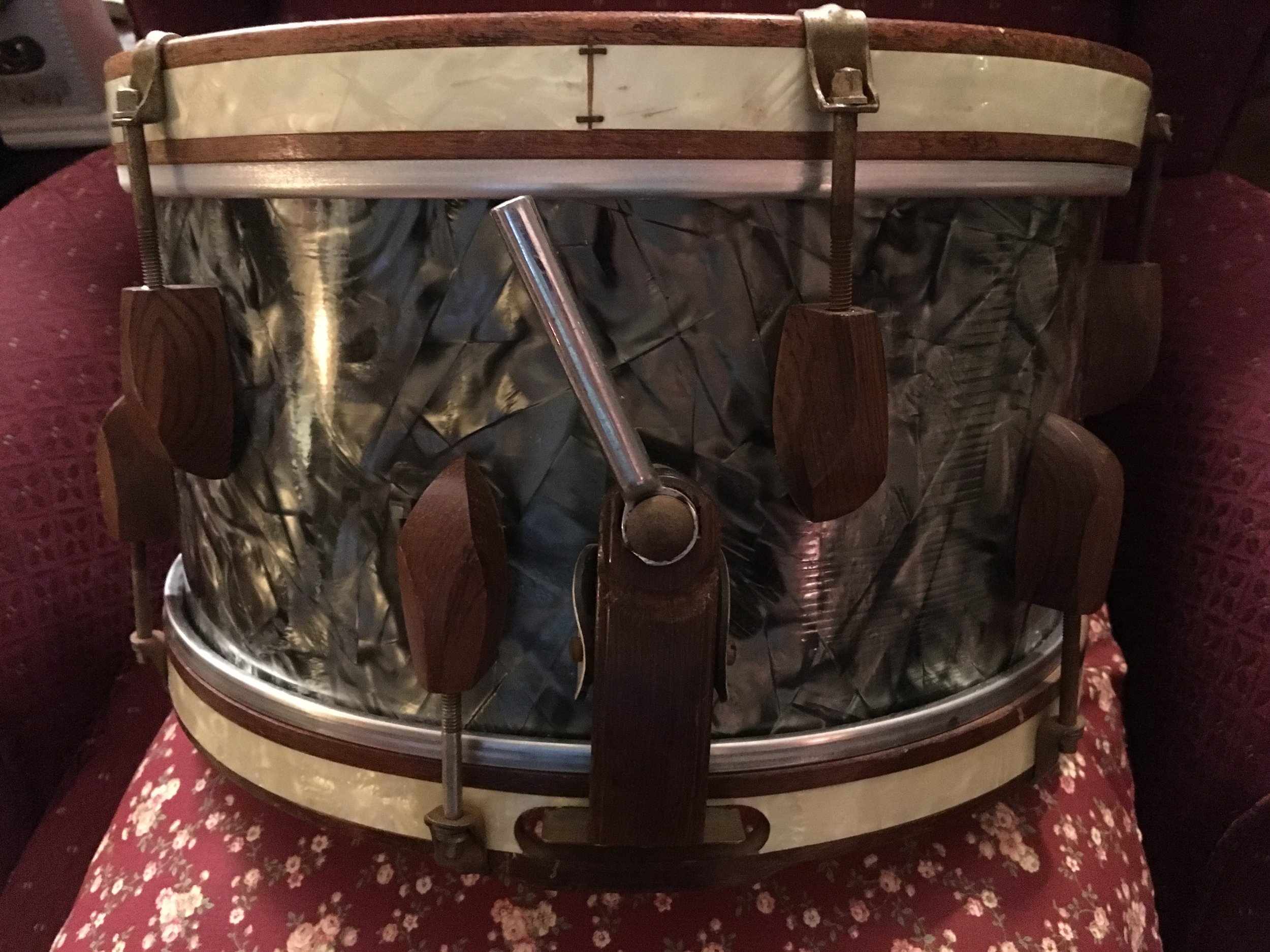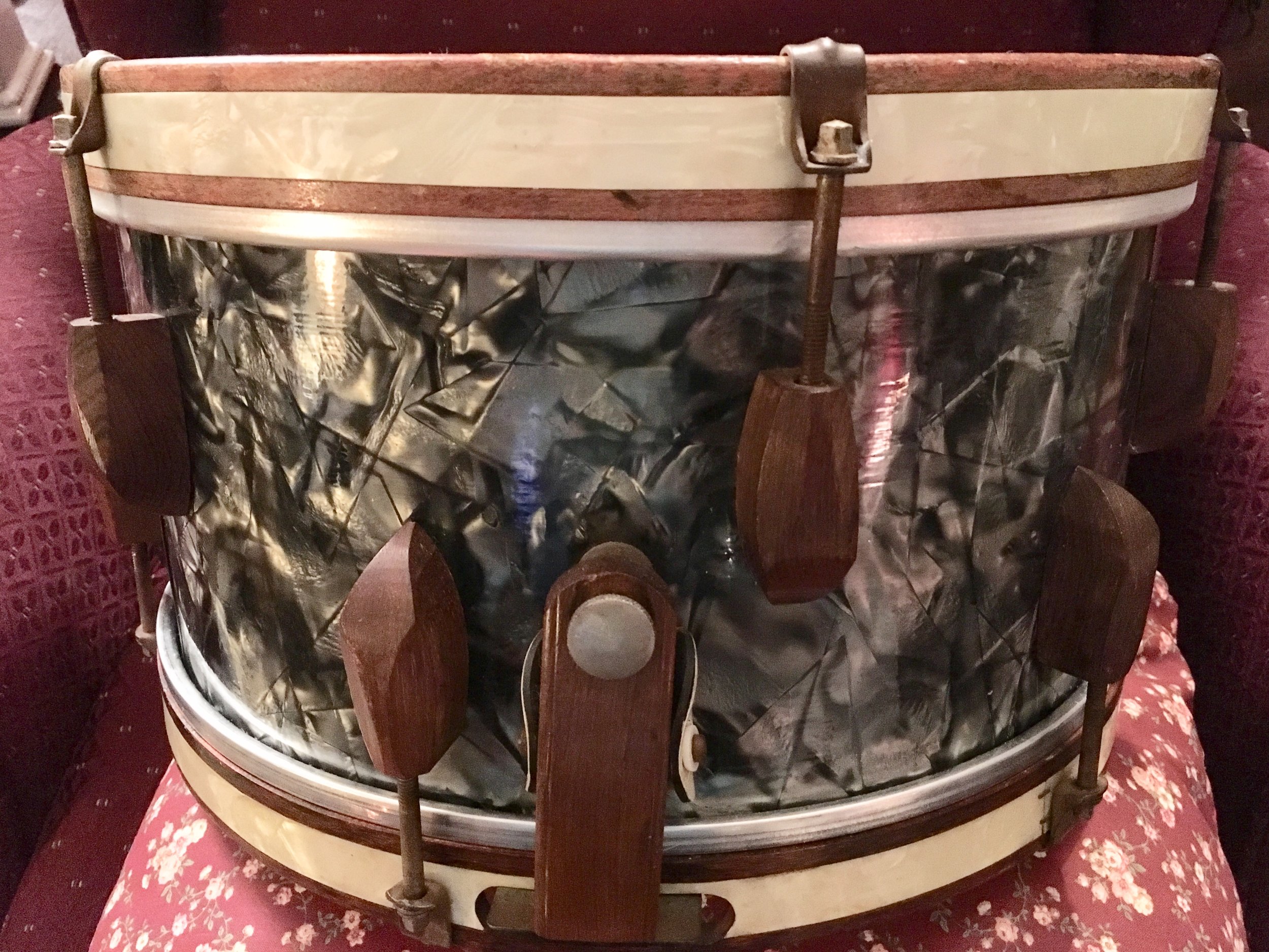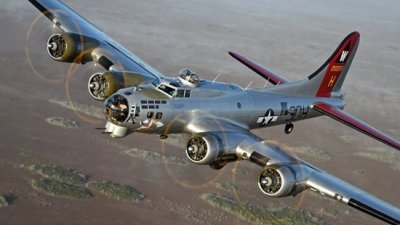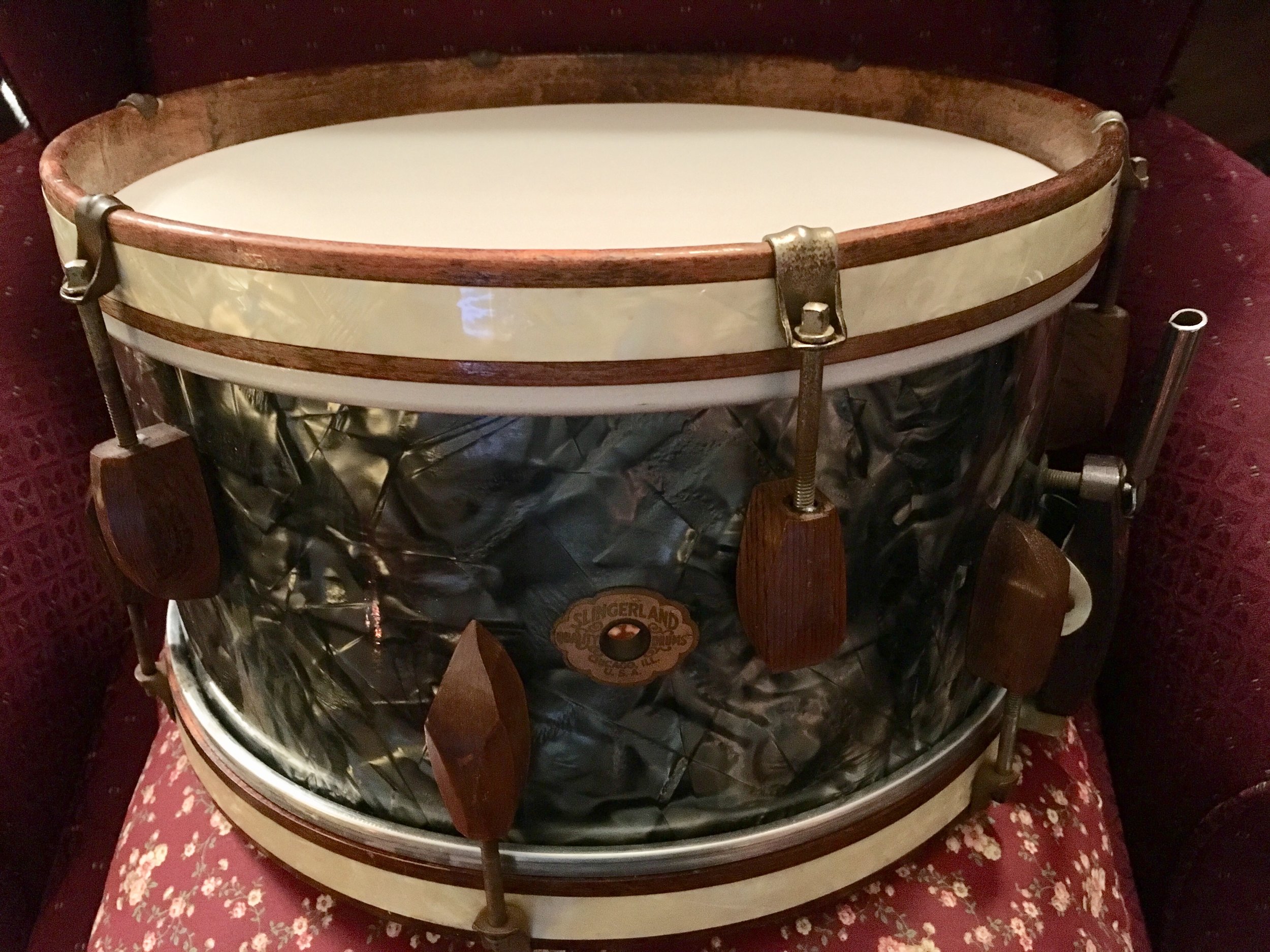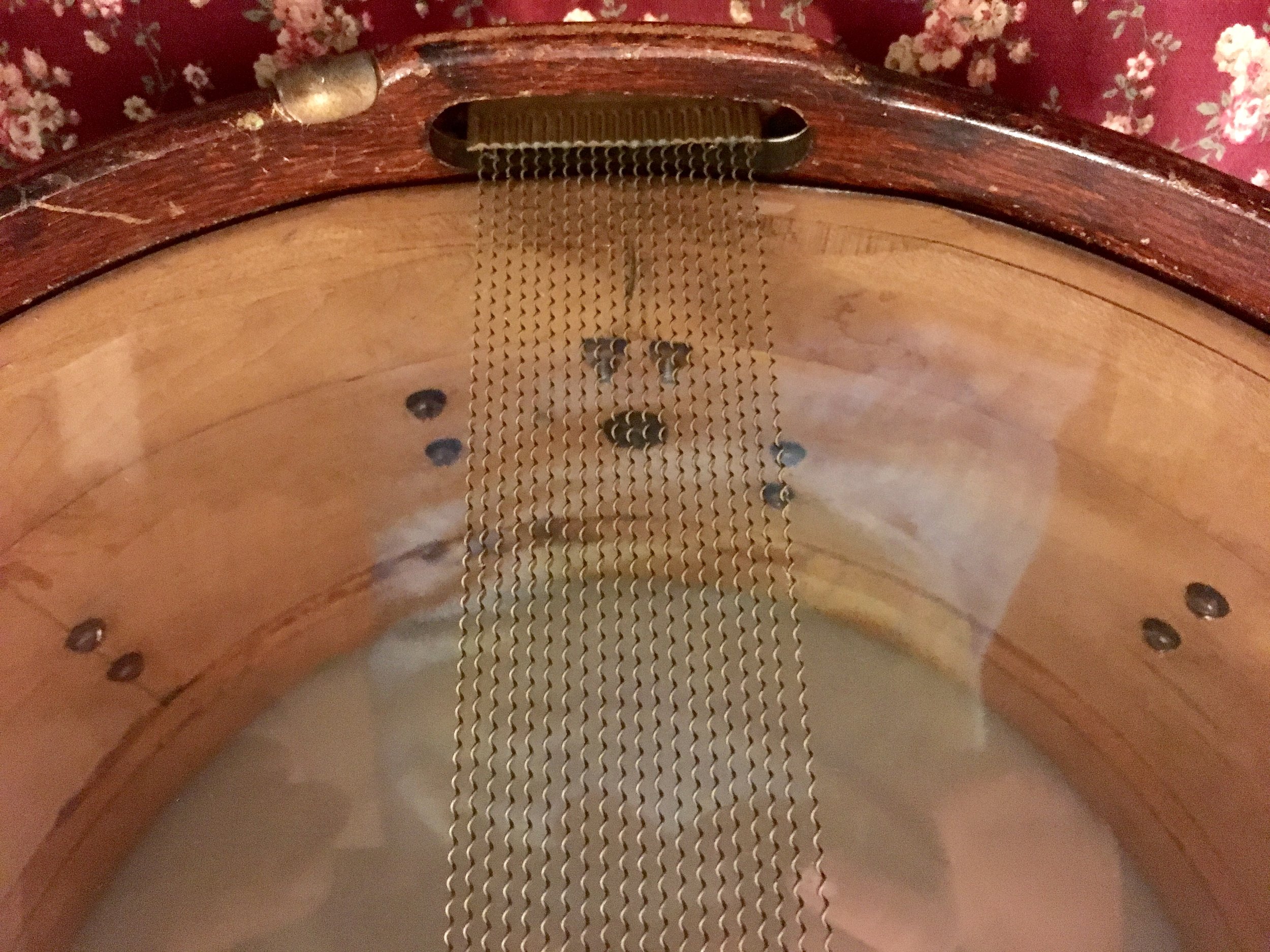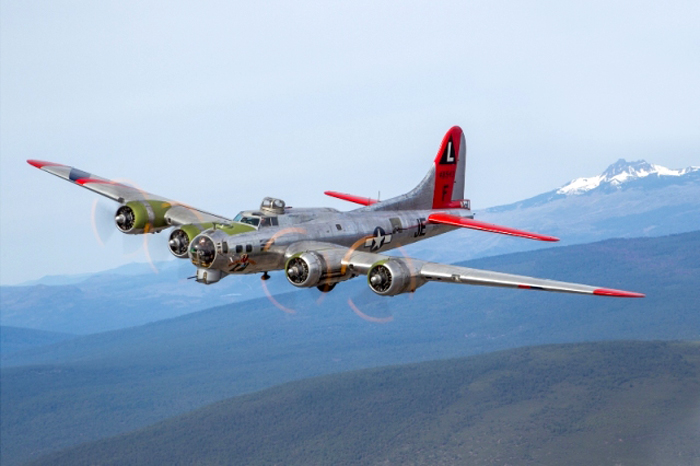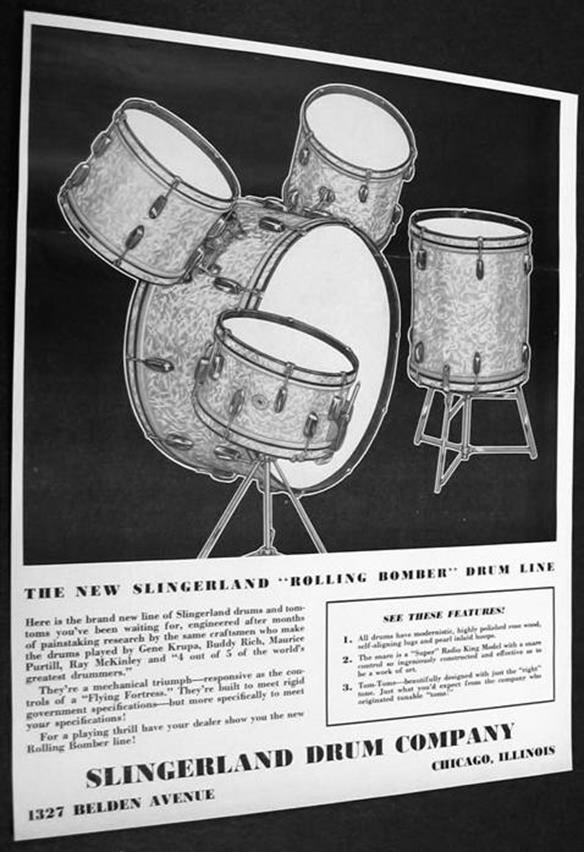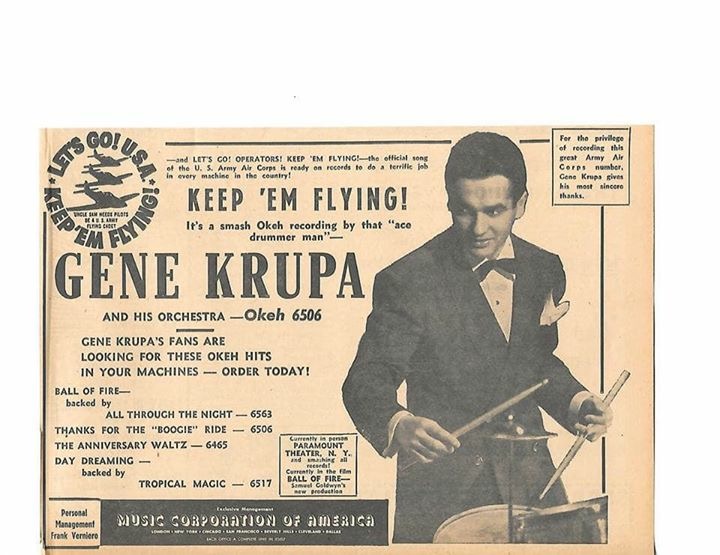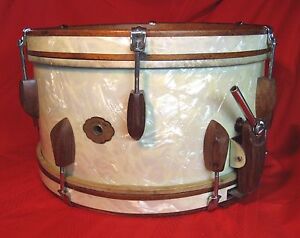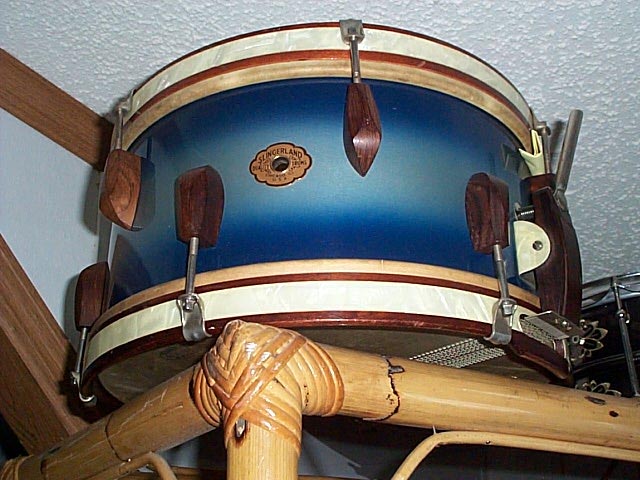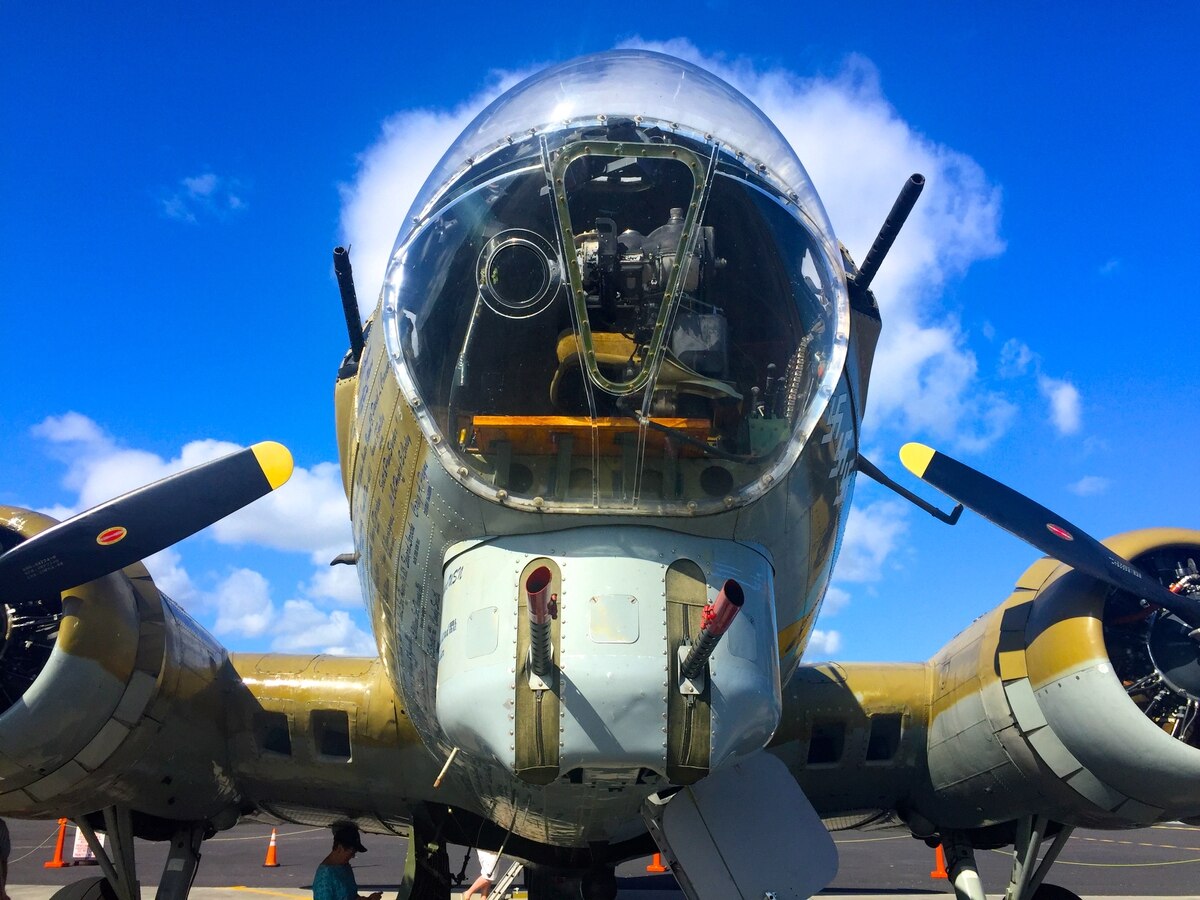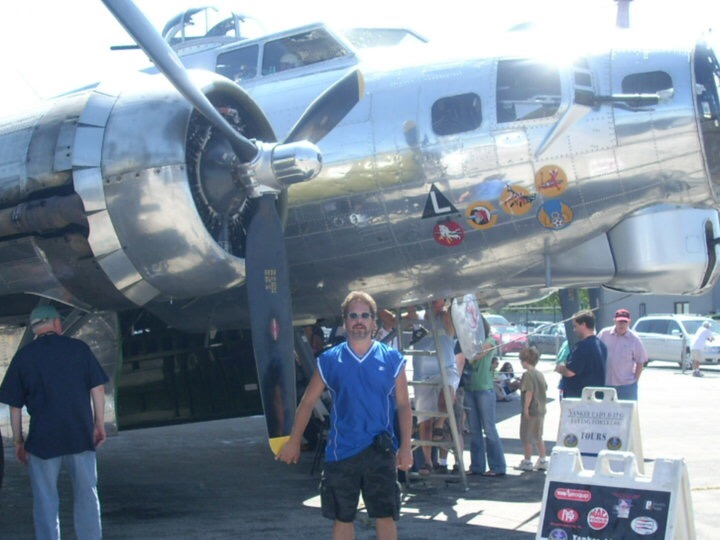On December 7th, 1941 the Japanese bombed Pearl Harbor, “a date that will live in infamy”. The United States entered World War Two and the course of history would be forever changed.
By 1942, all non-essential items were greatly affected by the war time policy to ration metals which were used to produce and manufacture arms and munitions. All musical instrument manufacturing companies were given the order to use a total of only 10% metal in their products. This greatly impacted how they produced each of their particular instruments. The big three drum manufacturers - Slingerland, Ludwig and Leedy - each had to face the challenges of developing new radical drum innovations and designs.
Slingerland had to go back to the drawing board and try to create a functional instrument that could satisfy consumers’ demands. They not only came up with a special solution, but created one of the most beautifully crafted and artistic drum designs of World War Two.
This innovative design was named the “Rolling Bomber” drum line, dedicated to the U.S. B-17 bomber airplane of world war two. Also, this airplane became known as “The Flying Fortress.” Slingerland’s catalog of 1942 featured the new “Rolling Bomber" snare drum. One description states, “They're a mechanical triumph----responsive as the controls of the “Flying Fortress.”
These drums were offered in a variety of one and two-tone Duco finishes. Several sparkling pearl finishes were also available upon request and special order. Here is a wonderful example of a rare, black diamond pearl Rolling Bomber snare drum. This particular snare drum is unique in that most Rolling Bombers produced were ordered with the popular white marine pearl. Black diamond pearl was very uncommon for this time period. Slingerland’s top artist “ace drummer man,” Gene Krupa, specified white marine pearl on all of his Radio King drums. Many other Slingerland artists & endorsees used white marine pearl as well. Only a handful of Rolling Bomber drums with this black diamond pearl finish have surfaced and survived.
Here are the Specifications:
Shell Design:
The construction of the 7”x14” shell is one ply of steam-bent maple wood with solid maple reinforcing rings. The rings keep the drum “in round”.
Interestingly, the Rolling Bomber shell was constructed a little differently than the previous Radio King model shells. The rings were much wider. This may have been done for more strength and stability.
Lugs:
The lug design of the Rolling Bomber is certainly unique and beautiful. There were only six lugs for top and six lugs for bottom. They were hand carved rosewood which was quite exotic. The lugs were routed inside and equipped with a flat style nut to receive the tension rods. These lugs were very prone to breaking under tension.
Hoops:
The hoops were constructed of solid maple wood.
They are approximately 1-3/4” wide with a channel for the 3/4” white marine pearl inlay strip.
The bottom hoop design has a beautifully crafted snare gate to accommodate the extended snare wires. This design is a carryover from previous Radio King snares, like the “Ben Pollack” model.
Throw-off/strainer:
The Super Gene Krupa or “clam shell” throw off designed was used for the strainer system. Most likely, the venerable three-point strainer was given much consideration too, but its design did not lend itself to wood construction. The “Super Krupa” could be made out of wood. The Slingerland workers would hand carve each of these components as well. The wooden throw off and butt plate are almost identical to the metal originals except for a few minor adjustments. They are suspended in place using a plastic, bakelite housing bracket with two pins to pivot. This was a great material choice to replace the previous metal bracket. The first generation of the throw handles were also constructed of hand carved wood due to the metal limitations. However, because of the fragility, metal could be substituted for strength. The butt side strainer had a carriage style knurled knob for increasing and decreasing snare wire tension. The bottom of each strainer had a single machine screw to attach the extended snare wires. Two pins were also installed on each side of the strainers to keep the snare wires aligned.
Tension rods:
Twelve - 2-1/2” tension rods
Clips:
Twelve unique clips, six on top and six on bottom, were one claw types, using the absolute minimal amount of metal.
Remaining rardware:
Twenty-four metal machine screws were used for attaching the twelve rosewood lugs. Two machine screws on each side of the throw off and butt plate held these in place. In order to meet the government ordered metal restriction there were no metal washers or mufflers used .
Snare wires:
Slingerland 16" extended twenty-strand wires
So, there we have it. This specially crafted “Rolling Bomber” snare drum is a true testament to the American ingenuity of the Slingerland drum company. World War Two and history leaves behind this beautifully crafted and artistic snare drum, from our country’s “greatest generation”.
This article is dedicated to all of the men and women of World War two, who so gallantly fought for our country's freedom, liberty and protection.

